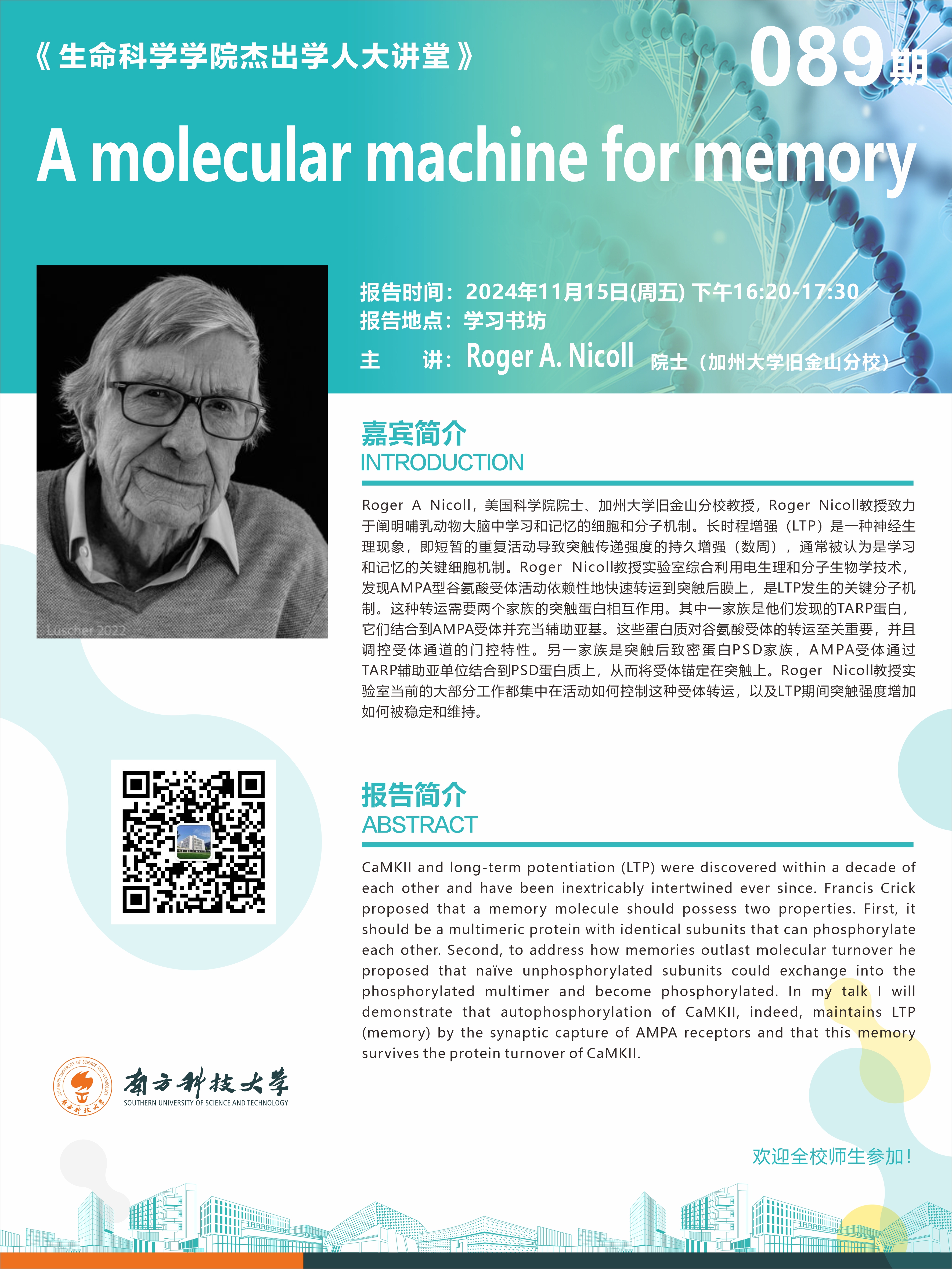
主讲人: Roger A. Nicoll 院士(加州大学旧金山分校)
时间: 2024年11月15日(周五)16:20-17:30
地点: 学习书坊
题 目:A molecular machine for memory
主 讲:Roger A. Nicoll 院士
时 间:2024年11月15日(周五)下午16:20-17:30
地 点:学习书坊
报告摘要:
CaMKII and long-term potentiation (LTP) were discovered within a decade of each other and have been inextricably intertwined ever since. Francis Crick proposed that a memory molecule should possess two properties. First, it should be a multimeric protein with identical subunits that can phosphorylate each other. Second, to address how memories outlast molecular turnover he proposed that naïve unphosphorylated subunits could exchange into the phosphorylated multimer and become phosphorylated. In my talk I will demonstrate that autophosphorylation of CaMKII, indeed, maintains LTP (memory) by the synaptic capture of AMPA receptors and that this memory survives the protein turnover of CaMKII.
嘉宾简介:
Roger A Nicoll,美国科学院院士、加州大学旧金山分校教授,Roger Nicoll教授致力于阐明哺乳动物大脑中学习和记忆的细胞和分子机制。长时程增强(LTP)是一种神经生理现象,即短暂的重复活动导致突触传递强度的持久增强(数周),通常被认为是学习和记忆的关键细胞机制。Roger Nicoll教授实验室综合利用电生理和分子生物学技术,发现AMPA型谷氨酸受体活动依赖性地快速转运到突触后膜上,是LTP发生的关键分子机制。这种转运需要两个家族的突触蛋白相互作用。其中一家族是他们发现的TARP蛋白,它们结合到AMPA受体并充当辅助亚基。这些蛋白质对谷氨酸受体的转运至关重要,并且调控受体通道的门控特性。另一家族是突触后致密蛋白PSD家族,AMPA受体通过TARP辅助亚单位结合到PSD蛋白质上,从而将受体锚定在突触上。Roger Nicoll教授实验室当前的大部分工作都集中在活动如何控制这种受体转运,以及LTP期间突触强度增加如何被稳定和维持。